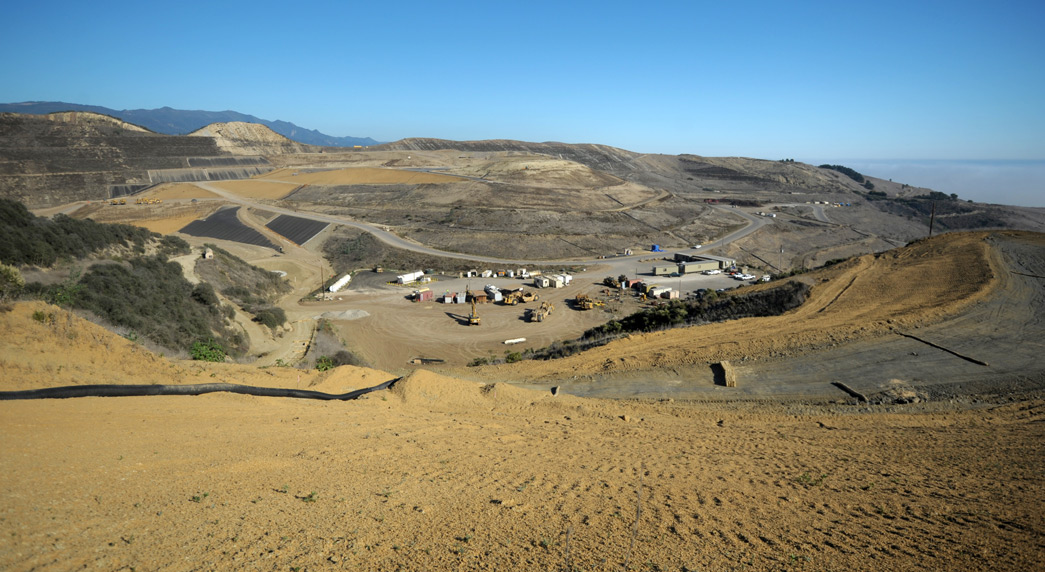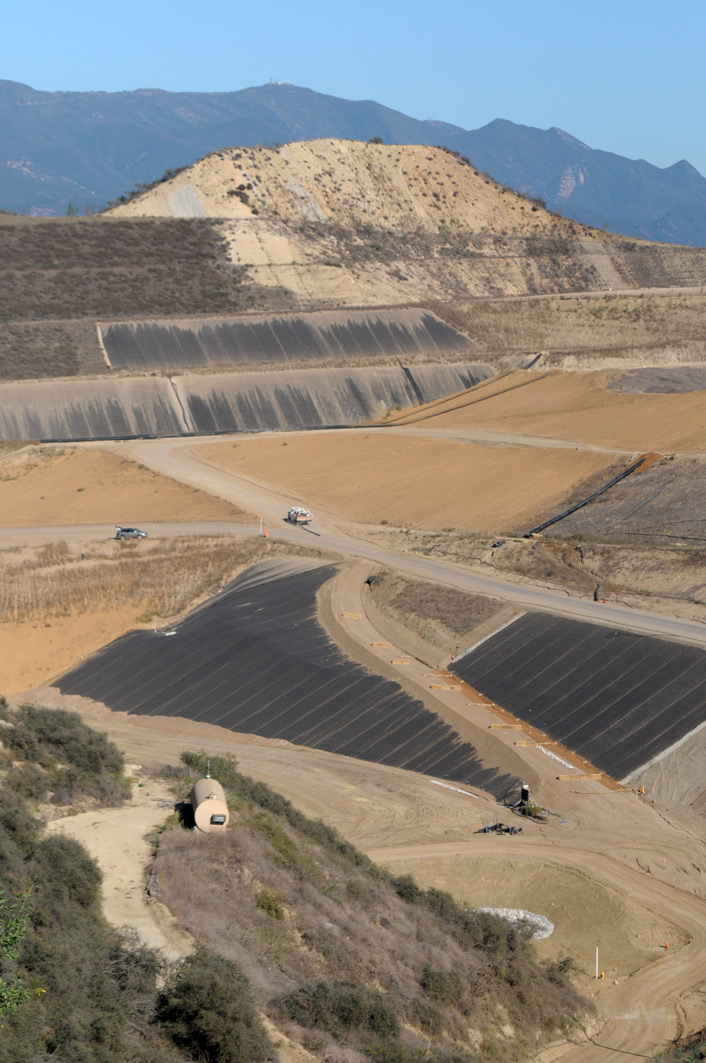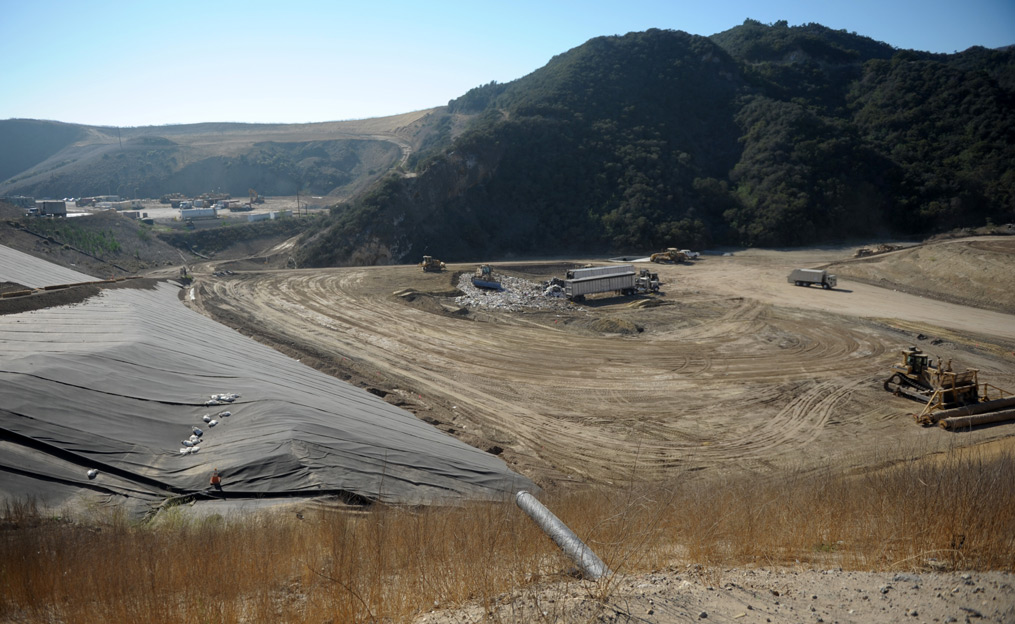Tajiguas Landfill Gets Expedited Expiration Date
With Lawsuit Settled, Tajiguas Project on Track

After decades opposing the oceanfront Tajiguas Landfill — final resting place for 200,000 tons of Santa Barbara County trash a year — the Gaviota Coast Conservancy has laid down the fight, settling its lawsuit on Tuesday. In exchange, the Santa Barbara County supervisors vowed to find another dump when Tajiguas fills up, rather than seek permits to expand operations there any further. As a result, county trash planners are free to pursue their $540 million plans to extend the landfill’s life span — to 2036 — by repurposing the trash. (The county’s contract for building the project sits at $130 million; city officials have calculated that over its entire lifetime, the project will end up costing $540 million.)
That price tag will bankroll a massive recycling plan to scale back how much gets buried at the landfill. Included are a sorter to separate out recyclable and compostable items from the county’s brown trash bins and an industrial-scale digester that turns plants and food scraps — extricated by the sorter — into compost and power. Although the dump will eventually close, these facilities will stay on the Tajiguas plot indefinitely.
“While it’s not our favorite project, it’s one that the county and the cities have all bought into,” said Marc Chytilo, the attorney representing the Gaviota conservancy. “And we’re going to let it proceed expeditiously to have the intended environmental benefit.”
Public Works’ Mark Schleich, deputy director for resource recovery and waste management, said both project and settlement underscore the county’s commitment to the environment. “We’ve been on the Gaviota Coast since the mid-’60s and have always tried to be a good neighbor to the coast,” Schleich said. The planned composter, an anaerobic digester, will reduce greenhouse gases by collecting carbon dioxide and methane and converting the gases into electricity. By Schleich’s count, this will slash emissions equivalent to those of 24,000 cars and generate enough juice to power 1,000 homes.
Chytilo’s lawsuit was part of a broader effort to stop what he termed the “industrialization” of the Gaviota Coast. More specifically, it alleged the plan — and its review process — violated the California Environmental Quality Act, the California Coastal Act, and state planning regulations. He opted to drop the suit in part because the City of Santa Barbara — the largest stakeholder at Tajiguas — was decidedly disinclined to consider any alternatives.
The lawsuit had emphasized that Tajiguas wasn’t the only landfill around. Santa Maria has started work on new dump facilities in Los Flores Ranch, so trucking South Coast trash farther north was possible. Tipping fees there are expected to be considerably less. But county officials insist that the South Coast should not export its trash elsewhere. They note the extra cost and expanded carbon footprint of trucking make the Santa Maria option less desirable.

Santa Barbara’s landfill was located at Tajiguas in 1967 because of its remote location, midway up the Gaviota Coast. Today, it could never get approval from the California Coastal Commission. Landfill lining wasn’t required in 1967, so only Tajiguas’s natural shale bed stood between its first waste pile and the groundwater basin below. Tajiguas was meant to last a century, but after just 31 years, it was nearly half full.
In 1998, Santa Barbara County supervisors rejected the current plan — a new trash sorter and a composter — and directed staff to find another site for the landfill. Maybe they could close Tajiguas in 15 years or less, they speculated. Such plans proved to be wishful thinking as every site proposed was greeted with intense opposition. Back in 2002, the Board of Supervisors expanded the landfill’s permitted storage capacity by 8.2 million cubic yards. But thanks to vigorous recycling programs and lower dump rates, that space has lasted more than its slated decade and a half.
Even before the lawsuit, a number of serious hiccups caused problems for the long-incubating Tajiguas Resource Recovery Project, or TRRP. In 2017, with plans approved and contracts signed, the county discovered construction would encroach into the Coastal Zone Boundary. This unhappy revelation brought financing efforts — then nearly complete — to a grinding halt.
But many recycling experts remain less than thrilled with the plan. Cost, they insist, is a major sticking point, and the volatility of the recycling market could prove problematic, if not fatal. The Public Works budget expects recycling sales to generate 75 percent of the landfill’s revenue stream. But China — a major purchaser of U.S. recyclables — has tightened its buying standards dramatically, and such revenue may be a thing of the past.
Given this market reality, five high-profile trash experts discouraged Santa Barbara government officials from continuing with the Tajiguas project. They issued a joint letter of opposition last year. Paul Relis, a former member of the California Integrated Waste Management Board (now CalRecycle) and one of the pioneers of recycling in Santa Barbara, warned that if the county can’t sell the low-grade recyclables the sorter produces, “They’re going to have to landfill the material.” The county’s Schleich countered that recycling sales have always been volatile and that they may soon level out.
The other cost issue has to do with project financing. Mustang Renewable Power Ventures — the contractor building the project and a newcomer to recycling infrastructure — initially proposed to privately finance construction and equipment. Several years ago, Mustang announced it would no longer seek such financing; the county opted to finance the project with bonds and shoulder the financial risk. County officials stressed they could get lower interest rates.

Relis worries that unforeseen operating costs and poor recycling sales could translate into higher trash bills for the public. As the project has progressed, the projected tipping fee — the cost to dump a ton of trash — has risen steadily, landing at $142 at the most recent projection. Tipping fees are currently around $95 a ton.
Environmental activists also worry that the landfill plan will set a low bar for similar projects. Trash disposal isn’t glamorous, but it should be a major opportunity for environmental action, they say. The TRRP appears to deliver little return at a very high cost. “If it fails, you’ve got a gigantic failure on a major environmental project, which everybody’s going to point to and say, ‘See, I told you this stuff doesn’t work right,’” said Hal Conklin, who worked with Relis on Santa Barbara’s early recycling policy and was the city’s mayor from 1993 to 1994.
In addition to setting a drop-dead date for the landfill, the settlement secures funding for several environmental projects around Tajiguas. The county will spend $100,000 on a recreation master plan at Baron Ranch, the 1,000-acre plot adjoining the dump. It’ll fill in $130,000 to finish a trail from the ocean to Camino Cielo Road there. Another $50,000 will go toward restoring habitat for endangered red-legged frogs. And Mustang will match the county’s $150,000 contribution to promote and study carbon farming — agricultural methods meant to pull carbon dioxide into soil to mitigate its atmosphere-warming effects.
Attorney Chytilo insists the settlement is not so much a retreat but a restatement of the supervisors’ previous position. It’s just more formal, he said, this time around. When the dump has seven years of capacity left, the county will have to undertake another giant project: finding a new landfill site.



